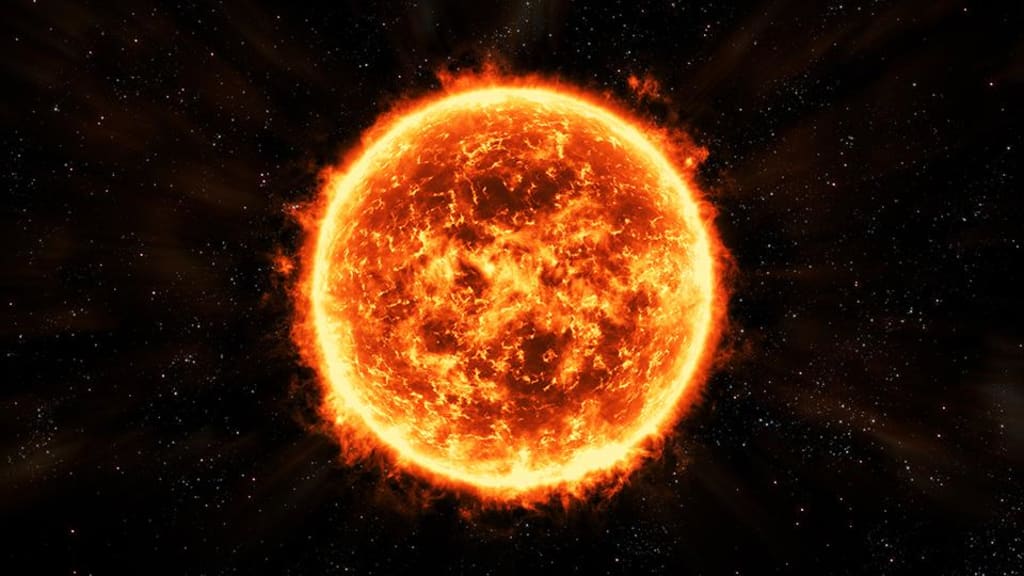10 Factual Evidence About The Sun You Should Know!!!!!
present the facts to put you on firm ground

The sun is the closest star to Earth and is the source of all life on our planet. It is a massive ball of gas, mostly hydrogen and helium, that produces enormous amounts of energy through nuclear fusion. Despite being a relatively ordinary star, the sun is a fascinating object with a variety of interesting facts and features. In this article, we will explore 10 factual pieces of evidence about the sun that everyone should know. From its immense size and temperature to its effects on Earth's weather and space weather, the sun is a crucial component of our solar system and our understanding of the universe.
* The sun is a star: The sun is the closest star to Earth and is classified as a G-type main-sequence star. It is located at the center of the solar system and provides energy to all the planets in the form of light and heat.
* The sun's size: The sun is enormous and has a diameter of about 1.4 million kilometers (870,000 miles), which is about 109 times larger than the Earth's diameter. It contains more than 99% of the total mass in the solar system.
* The sun's composition: The sun is mostly composed of hydrogen (about 74%) and helium (about 24%) with the remaining 2% being made up of other elements such as oxygen, carbon, neon, and iron.
* The sun's temperature: The sun's surface temperature is around 5,500 degrees Celsius (9,932 degrees Fahrenheit), while the temperature at its core is estimated to be around 15 million degrees Celsius (27 million degrees Fahrenheit).
* The sun's energy: The sun generates energy through nuclear fusion, where hydrogen atoms fuse together to form helium. This process releases a tremendous amount of energy, which is why the sun emits so much heat and light.
* The sun's magnetic field: The sun has a strong magnetic field that is constantly changing and can cause solar flares and coronal mass ejections (CMEs). These events can cause disruptions in Earth's magnetic field and can interfere with satellite and communication systems.
* The sun's sunspots: Sunspots are areas on the sun's surface that appear darker than the surrounding area. They are caused by the sun's magnetic field and are associated with increased solar activity, including solar flares and CMEs.
* The sun's cycle: The sun has an 11-year cycle of activity, where the number of sunspots and solar flares increases and decreases over time. This cycle is called the solar cycle and is currently in its 25th cycle.
* The sun's impact on Earth: The sun's energy is essential for life on Earth, but it can also have negative effects. Solar flares and CMEs can cause disruptions in Earth's magnetic field, which can lead to power outages, communication disruptions, and damage to satellites and other electronics.
* Studying the sun: Scientists study the sun to better understand its behavior and how it affects Earth. They use a variety of tools and instruments, including telescopes, spacecraft, and ground-based observatories, to study the sun's magnetic field, temperature, and activity.
Sources:
NASA: The Sun - https://www.nasa.gov/mission_pages/sun/main/index.html
Space.com: The Sun: Facts, Layers & Temperature - https://www.space.com/58-the-sun-formation-facts-and-characteristics.html
About the Creator
Quincy.V
My blog is a space where I share tips, insights, and inspiration related to the topic, with the goal of helping my readers improve their area of interest.
Enjoyed the story? Support the Creator.
Subscribe for free to receive all their stories in your feed. You could also pledge your support or give them a one-off tip, letting them know you appreciate their work.






Comments
There are no comments for this story
Be the first to respond and start the conversation.